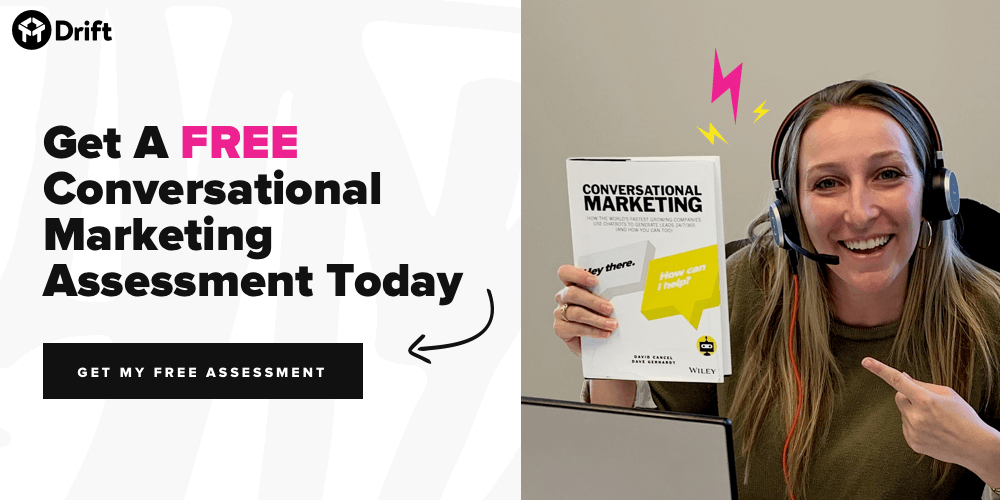
It’s time to update your conversion rate optimization strategy.
Today’s customer educates themselves before they make contact with a brand. They want to be treated like people and they expect brands to talk to them, not at them.
So it’s important to rethink your CRO strategy by mapping out the conversation points on your site rather than thinking about capturing information through forms and gated content alone.
Below, we’ll look at some ways you can update your approach to CRO so you can book more meetings, have more conversations, and yes, close more deals.
Have You Defined What a Conversion Means for Your Brand?
Right out of the gate, you need to establish your own definition of conversion before you start building out your campaign.
The whole point of CRO is to drive more visitors to your website and from there, guide them toward completing your business goal.
So, write it down. What are your business goals? And what counts as a conversion? Are you hoping to book more meetings or get people to download a free resource?
Chances are, you’ll have a few goals in mind as you put together a plan of attack, but ideally, you’ll want to come up with a “conversion path” for new leads, returning customers, and people who are doing research on potential solutions.
Optimization Still Starts with the Basics
Marketing is undergoing some major changes. SEO strategies now depend on topic clusters and helpfulness more than fragmented keyword strategies and marketing and sales are teaming up to deliver customer-centric experiences. (Click to Tweet this ☝️) Overall, the process is getting a lot more conversational.
But, your CRO strategy still starts by making sure your website is both easy-to-use and easy-on-the-eyes.
When your text, images, and usability are all in working order, you’ll find that you set the tone with a positive first impression. A few things to review before launching a full-blown CRO strategy:
Text
From your product pages to your blog posts and help documentation, all content must be readable and relevant.
Make sure you break up large blocks of text with graphics, bullet points, and headers. This makes it scannable and easy to read, so customers can identify whether they’ve found the information they’re looking for.
Graphics
It’s inevitable – customers will judge your site based on looks. For a first-time visitor, a working, attractive website helps make a personal connection with your audience. For one, it helps you establish a brand identity, which you can reinforce across your social media channels, paid ads, and so on. Second, a good-looking site makes it look like you’ve got a legit operation – you’re a business that can be trusted.
Site Speed
Page load time impacts everything from conversions to page views to your brand’s reputation. And nearly 80% of customers who are dissatisfied with a site’s load times are unlikely to return.
CTAs
Check that your CTAs are noticeable and that the offer corresponds with the rest of the content on the page. For example, a CTA in an awareness stage blog post should encourage someone to sign up for a mailing list or follow your brand on social media. It would seem out of place to go for a more aggressive “buy now” CTA.
Beyond context, color and size matter, too. Brands should make sure that the buttons stand out – and maybe consider testing different versions, like the classic example below.

Navigation
Your navigation should serve as a map of your site. This might mean you present multiple offers and pages – but they should all be clearly labeled and easy to understand.
Beyond these core elements of CRO, it’s important to think about how you’ll optimize your website’s flow in a way that encourages a conversation. This means, making sure it’s easy to get in touch (contact info, chatbots, etc.) and that all content follows the engage, understand, recommend flow.
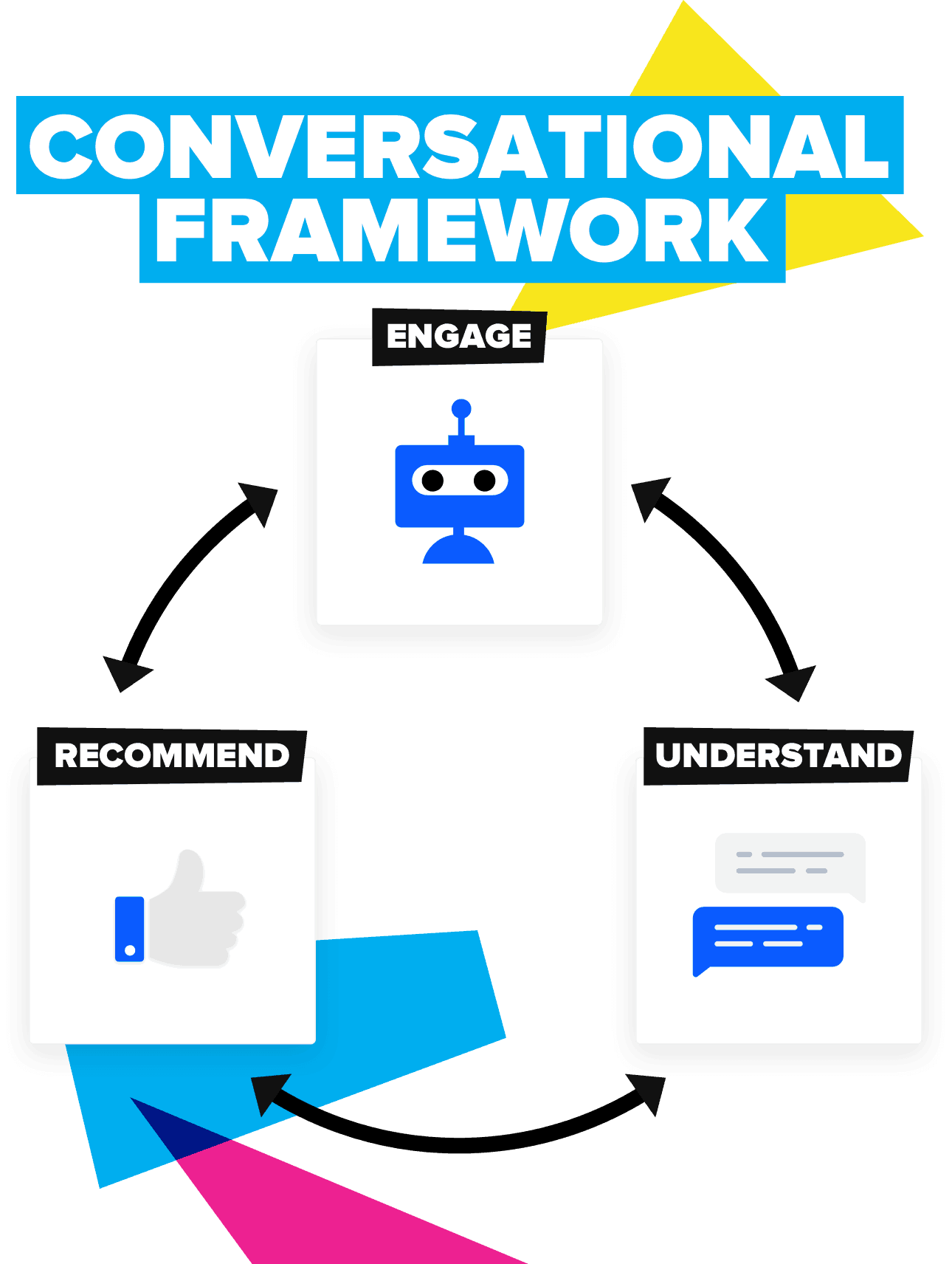
We’ll go over the mapping process in more detail in our Conversational Marketing Blueprint, but the idea here is to design your website so that you can route traffic toward chatbots that can qualify leads, and from there, guide them toward helpful content or connect them to a sales rep.
Deliver Relevant Content – Where it Counts
Building on the Conversational Framework mentioned above, you want to make sure that your website is set up to connect people with the content that speaks to what that person needs when they arrive on your site.
Content marketing works fine for driving traffic and for delivering valuable content to readers. But great content alone doesn’t lead to an uptick in conversions.
Brands should function as a helpful educator, not a pushy salesperson. But you also need to be strategic about how you present your content.
Which brings us back to our website content mapping. Blog posts and product pages should let the customer know what they can expect from your brand and the products or services you sell.
That said, different types of content cater to different parts of the sales funnel, so you’ll need to create a mix of content, and with it, a path toward whatever counts as a conversion at that stage.
Early on, company blog content is a great way to generate interest and educate your visitor. So, an entry-level blog post about advertising on Facebook might aim to “convert” the user by promoting a comprehensive social media advertising offer. You might also have your chatbot ready to answer questions or show some content recommendations based on the article they’ve clicked on.
Visitors in that “consideration” stage of the funnel are looking for answers to specific questions. This customer might come to your site through an article on how to streamline their invoicing process. If you sell accounting software, this is your chance to promote a free demo or have your chatbot ask the customer if they want to see how to connect your accounting software to their marketing budget management software.
Finally, if someone lands on your pricing page, take this opportunity to book an appointment for them with a sales rep.
Where Do Paid Ads Come into Play?
According to Unbounce, a whopping 98% of paid marketing campaigns fail due to message mismatch. And while that might make it sound like paid ads aren’t the best path toward more customers and better retention rates, they still matter.
Marketing and sales just need to consider how PPC aligns with their messaging and business goals. All marketing materials should center around the idea of being helpful. In this age of automation and hyper-targeting, brands need to be strategic about how they talk to their audience.
The paid ad, whether it’s a visually engaging boosted Instagram post or a text-only SERP ad, needs to attract searchers based on intent and meet expectations after the click. It’s too easy to rack up a massive Google AdWords bill with nothing to show for it.
Message Match Matters
Paid ads depend on consistency between the display and what the user sees post-click. The more the visitor can see that the offer matches their intent, the higher the chances of a conversion.
Consider What Happens After the Click
Your ad should direct users to a landing page that highlights the benefits and features associated with that product or service, plus a lead capture system.
Anatomy of a good landing page:
- Copy that tells the visitor why they’re the best solution to the visitor’s problem.
- Visible CTA button – Again, the CTA needs to stand out against the rest of the site and it needs to match the intent implied in your ad copy.
- Lead capture method – Traditionally, you’ll direct users to a form, as you’ll see in the example below. Users need to enter their information before they can try the demo, which in some cases, might be a point of friction.
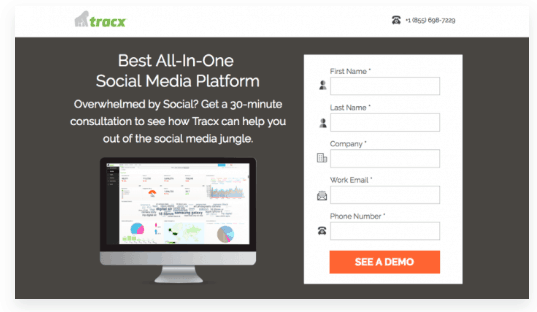
But, you could also try something like we’ve done on our own site with chatbots instead of forms. The chatbot allows you to collect information about a user, in real-time as a means of starting the conversation. For instance, if you’re on our case studies page, the bot on that page asks the visitor if they need help finding a particular one.
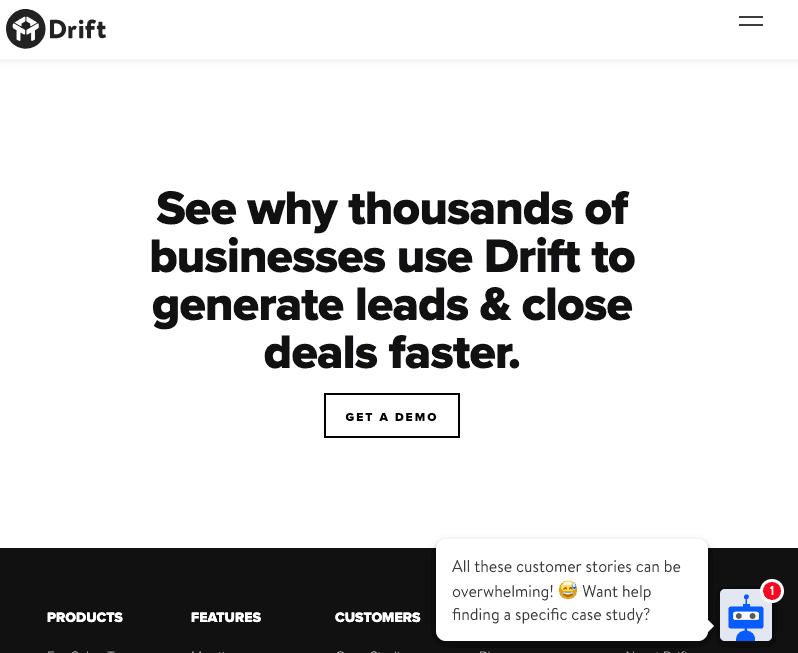
Collecting and Incorporating Feedback to Boost CRO
According to a 2017 eConsultancy study, only about 22% of marketers were pleased with their conversion rates. That’s not exactly a high success rate.
More effective CRO depends on reliable customer intel.
Often businesses think they understand their customer because they did a persona exercise one time or they’re going off of assumptions.
But, businesses need to use actual data to compete.
Obtaining feedback about the customer journey is essential. Luckily, between social channels, reviews, and online behavior, there’s no shortage of opportunities to learn more about who you’re marketing to.
Some areas where you can collect customer feedback:
- A/B or multivariate testing tools that allow you to deliver variants of experiences to understand the difference in outcomes from each version are invaluable.
- Digital surveys – Present surveys as pop-ups or inside the inbox.
- Social media – Analyze feedback from Twitter, Facebook, and Instagram, and more. Look at how people talk about your brand, who is tagging you in posts, are there any complaints or shoutouts?
- Reviews – Whether it’s Google, Yelp, TrustPilot, or Facebook reviews are a great way to find out what people really think.
- Chat Records – What kind of questions do customers ask? Chat records can tell you what kind of problems your customers are having, as well as
- Support Tickets – Like chat records, support tickets can tell you where customers are experiencing problems.
- Heatmapping tools to show you where your users stop scrolling or click most often, or better yet try to click but you don’t have an interaction point set there.
Now, before you start collecting feedback, you’ll want to start thinking about what you’d like to learn.
There are countless goals you could measure, but we’ll defer to Qualaroo’s table of opportunities as a starting point:
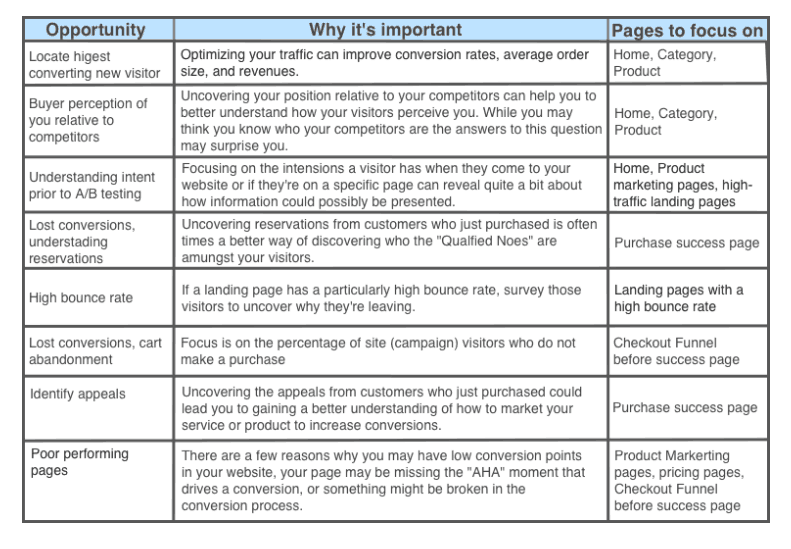
After you’ve established some goals, you’ll need to come up with a plan for measuring and implementing all that feedback, otherwise, you’re staring down a massive dataset with no structure for reigning it in.
CRO Should Facilitate a Conversation
At Drift, our focus is on conversational marketing. So, we see the CRO process as less about tricking future customers into giving up their emails in the hopes of delivering some workable leads to sales and more about working together to create a seamless experience for that would-be buyer.
Brands also need to rethink the conversion in general. Where marketing efforts have long centered around getting someone to complete a form, chatbots present an alternative way to collect information without holding that download offer captive.
Click here to learn more about using Drift to level up CRO, sales, and more.




